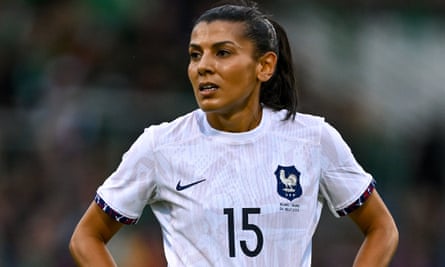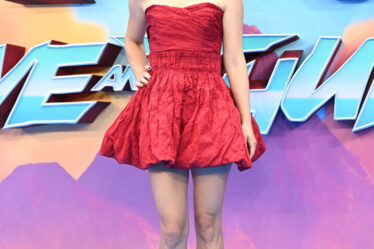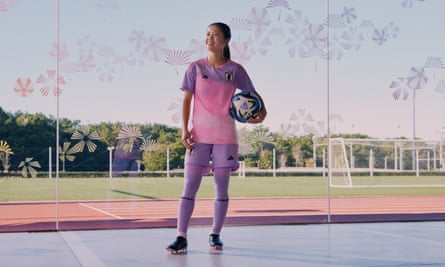
The football at the Women’s World Cup in Australia and New Zealand will probably see all manner of style and finesse, with organisers expecting hundreds of millions of people to tune in for the tournament.
Boosted by England’s Lionesses winning the Euros last year, a large proportion of viewers are likely to be from the UK when the competition kicks off on 20 July. But with kits now firmly on fashion’s radar, the players’ shirts can expect to provide as much of a talking point as Megan Rapinoe’s retirement at the end of the tournament.
Daniel-Yaw Miller, the senior editorial associate at the Business of Fashion online magazine, said more effort was being put into women’s kits.
“It wasn’t so long ago that professional women’s teams had to make do with wearing oversized and badly fitting kits designed for the men’s teams,” he said. “Soaring viewership means more eyeballs on the sport, and commercial partners, like kit manufacturers, will accordingly up their game.”
The biggest buzz in fashion circles has been building around the Jamaica kit, designed by Grace Wales Bonner in collaboration with Adidas. The British-Jamaican menswear designer’s January fashion show in Paris showed models in the football shirts alongside diamante details and crochet pieces.
The Japan away kit, with its tie-dye pastel patterns, is also gaining in popularity. It was sold out on the Adidas website in the weeks leading up to the tournament.
Some particular aspects of the kits have changed too – with England switching their shorts from white to blue so players on their period don’t have to worry about leakage.
Football shirts typically have a more male fanbase, giving cult status to certain vintage kits that endure to this day, including England’s 1990 third kit, Arsenal’s “bruised banana” from 1991 or Manchester City’s Kappa kit from 1997. But the current interest in kits goes beyond the desire to support teams. Shirts have become a fashion statement, including for people who have no apparent interest in the beautiful game.
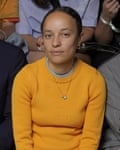
Along with Wales Bonner, brands including Martine Rose, Burberry and Koche have put kits on the runway, and a football kit was included in Pharrell Williams’ first show for Louis Vuitton in June. The Japanese designer Nigo, who works for Kenzo and A Bathing Ape, made a shirt for the Japan men’s World Cup team in 2022.
Celebrities including Kim Kardashian and Bella Hadid have – perhaps surprisingly – been spotted wearing football shirts. This has fuelled the Blokecore trend popular on TikTok, which puts retro-looking football shirts central to a starter kit that includes tracksuit trousers, and a pint as an accessory.
On Depop, searches for “vintage football shirt” are up 344% compared with June. Kardashian’s Roma shirt, meanwhile, increased internet searches for the club by 2.3m.
Felicia Pennant, the founder of the football and fashion magazine Season, is sceptical about this development. “People wearing football jerseys is a lifestyle more than a trend,” she said, but pointed to designers who use football kits in their work, such as Hattie Crowther, who makes corsets out of upcycled football kits.
Miller said he saw the football shirt’s new fashionability and the rise of women’s football as the start of something bigger, as with Prada making the off-field outfits for China’s women’s World Cup team.
Pennant also raised the question of sustainability around the constant supply of new kits. “Do we need all these jerseys?” she asked. “What happens to the ones that aren’t going to be used? Hopefully it will lead to some exciting experimentation which hasn’t happened yet.”
Pennant picked out the Jamaican kit as a favourite. “It is stylistically beautiful but it also becomes a symbol of national identity, particularly for Jamaicans in the diaspora who want to visually connect with their homeland. I say this being Jamaican myself.” Pennant has purchased both the home and away kits.
Bonner’s design, which is a little more fitted than most football shirts, has the potential to become the first classic of the women’s game. “It’s always a good sign when you see people wearing the shirts for casual use, in the streets, totally unconnected to football,” Miller said. “Traditionally, kit manufacturers invested the least money into smaller nations where they were likely to see a smaller return on sales, so it’s nice to see this trend reversing.”
Five kits to look out for at the Women’s World Cup
South Korea home
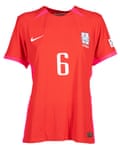
Pink and red is fashion’s favourite colour clash. Add Barbiecore-worthy hot pink socks, and it’s a sizzling contender in the style stakes.
Japan away
Designed to resemble a sunset, the pink and lilac colour scheme is very summer 2023. No wonder it was sold out on the Adidas website weeks before the tournament began.
Nigeria home

People queued up outside Niketown to get their hands on the the shirt worn by Nigeria’s men’s team for the 2018 World Cup. The signature green gets the full run of the kit here.
Jamaica home
Wales Bonner’s retro genderless kit, with tiny green stripes, is already highly prized by the most fashionable football fans.
France away
In what is perhaps a first, this kit, with its subtle painterly stripes, is inspired by orphism, the relatively obscure 20th-century art movement pioneered by the French artists Robert and Sonia Delaunay.
